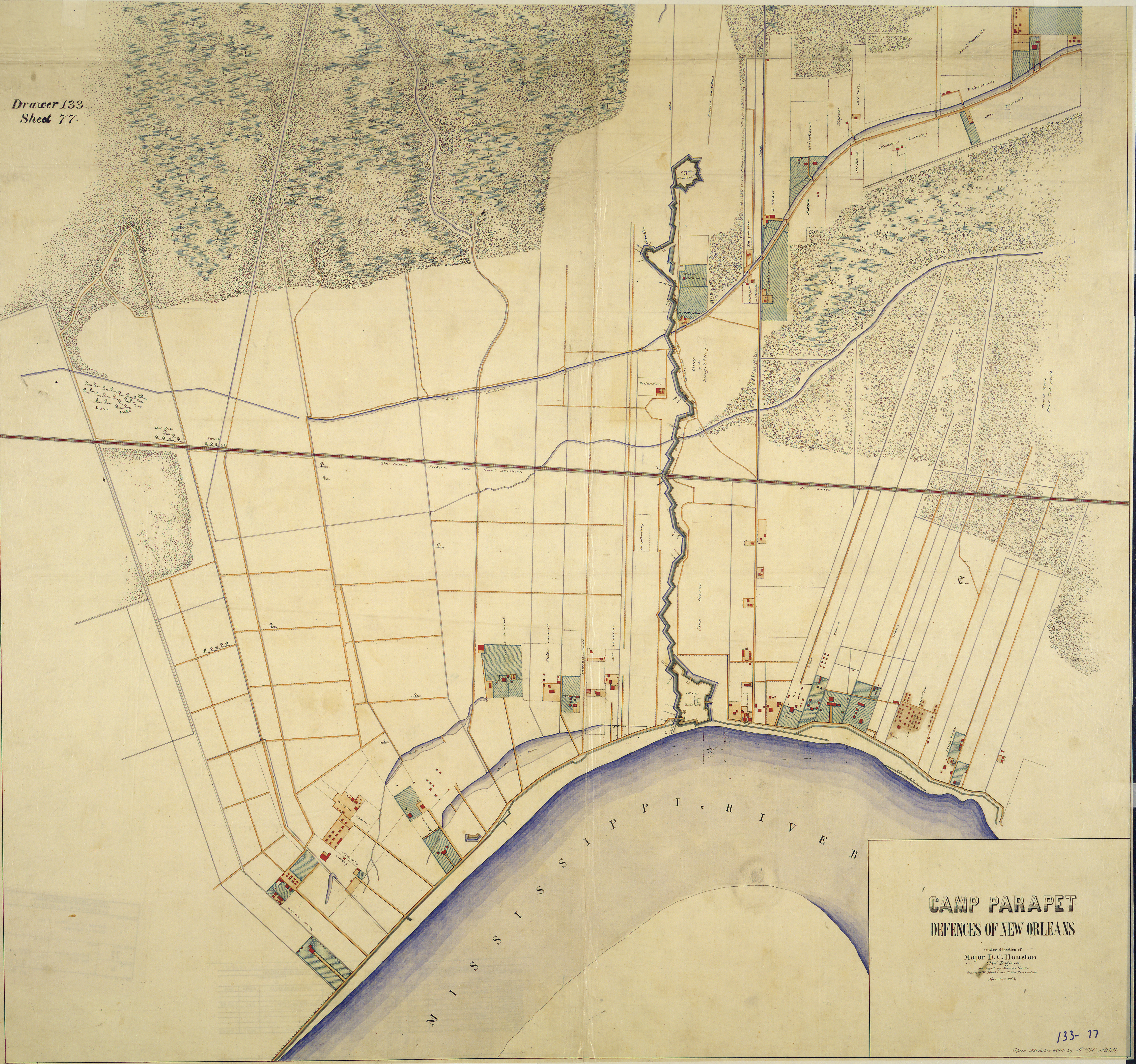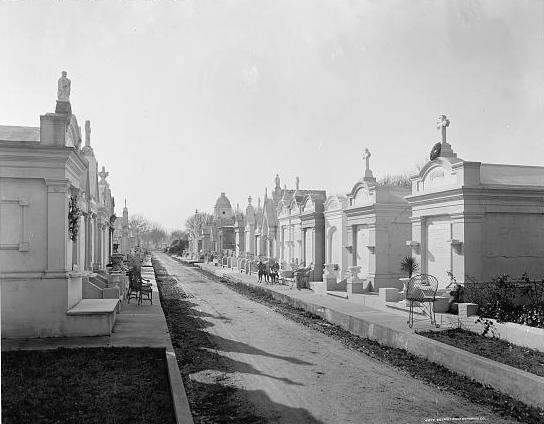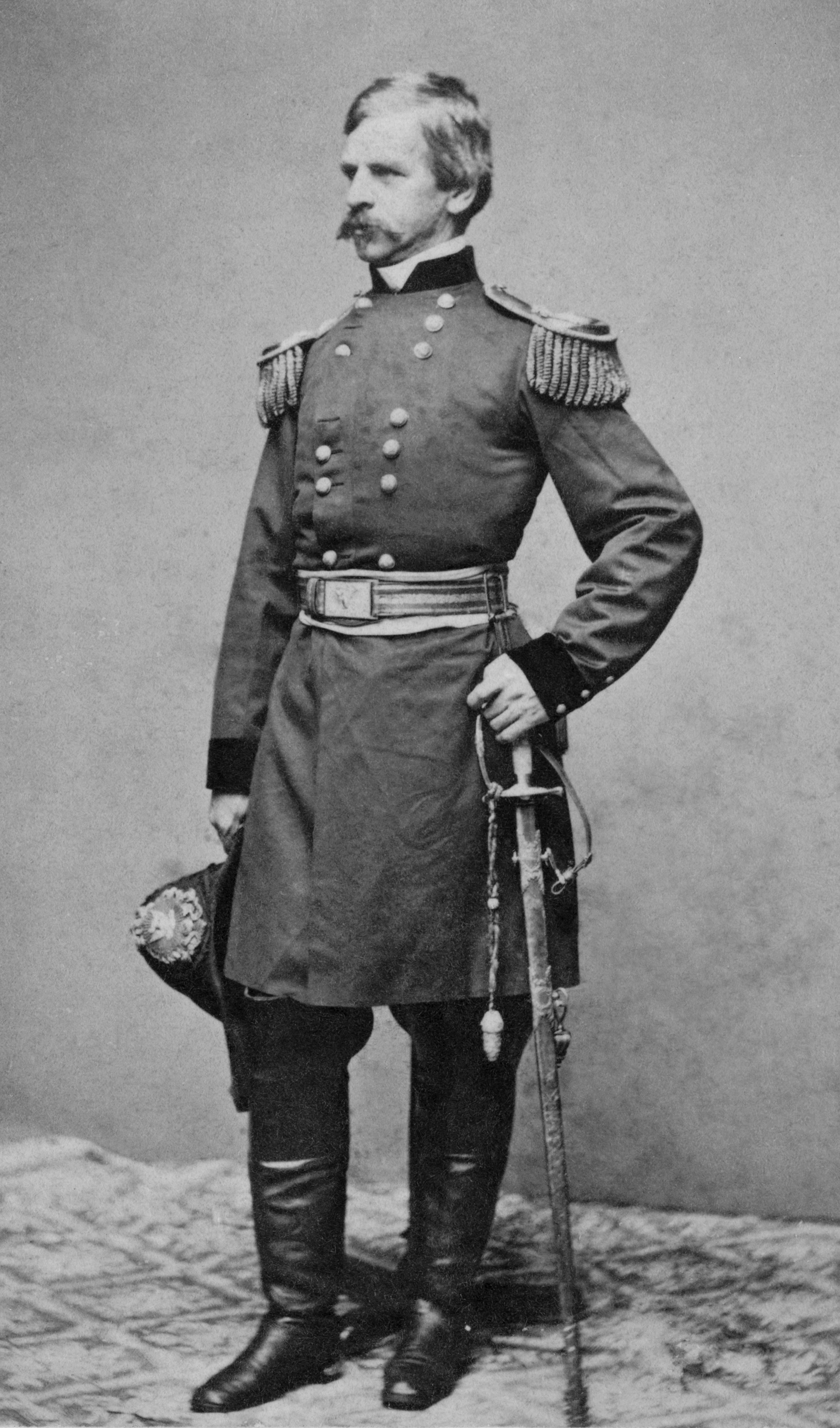|
47th Massachusetts Infantry Regiment
The 47th Massachusetts Infantry Regiment was a regiment of infantry that served in the Union Army during the American Civil War. It was one of the 18 Massachusetts regiments formed in response to President Abraham Lincoln's August 1862 call for 300,000 men to serve for nine months. The unit was known as the "Merchant's Guard Regiment" having been recruited primarily through the efforts of Boston merchant Lucius B. Marsh, who became the regiment's Colonel and commanding officer. The regiment's service was unusual in that it never saw combat as a full regiment. Two detached companies saw minor skirmishing without casualties. Instead of active combat duty, the regiment served guard and provost duty in various camps and fortifications in and about New Orleans, Louisiana. Service in Louisiana The 47th Massachusetts Infantry Regiment trained at Camp Edwin M. Stanton in Boxford, Massachusetts and Camp Meigs in Readville, Massachusetts. On November 29, 1862, they left Boston for New Yo ... [...More Info...] [...Related Items...] OR: [Wikipedia] [Google] [Baidu] |
Union (American Civil War)
During the American Civil War, the Union, also known as the North, referred to the United States led by President Abraham Lincoln. It was opposed by the secessionist Confederate States of America (CSA), informally called "the Confederacy" or "the South". The Union is named after its declared goal of preserving the United States as a constitutional union. "Union" is used in the U.S. Constitution to refer to the founding formation of the people, and to the states in union. In the context of the Civil War, it has also often been used as a synonym for "the northern states loyal to the United States government;" in this meaning, the Union consisted of 20 free states and five border states. The Union Army was a new formation comprising mostly state units, together with units from the regular U.S. Army. The border states were essential as a supply base for the Union invasion of the Confederacy, and Lincoln realized he could not win the war without control of them, especially Maryla ... [...More Info...] [...Related Items...] OR: [Wikipedia] [Google] [Baidu] |
Camp Meigs
Camp Meigs is a former American Civil War training camp that existed from 1862 to 1865 in Readville, Massachusetts. It was combined from the former Camp Brigham (formed to train the 18th Regiment Massachusetts Volunteer Infantry) and Camp Massasoit (formed to train the 24th Regiment Massachusetts Volunteer Infantry) and trained the 54th Regiment Massachusetts Volunteer Infantry, among others. The 54th regiment was one of the first official African-American units in the United States during the Civil War. The former camps were merged into Camp Meigs in August 1862. Other units that trained there include the 11th, 43rd, 44th, 45th, 47th, 48th, 55th, 56th, 58th, 59th, 60th and 62nd regiments of infantry; the 1st, 2nd, 4th and 5th regiments of cavalry; the 2nd regiment of heavy artillery; and the 5th, 9th, 11th, 12th, 13th, 14th, and 16th batteries of light artillery. The 6th, 18th, 22nd, 23rd, 24th, and 26th Unattached Companies Massachusetts Volunteer Militia ... [...More Info...] [...Related Items...] OR: [Wikipedia] [Google] [Baidu] |
Camp Parapet
Camp Parapet was a Civil War fortification at Shrewsbury, Jefferson Parish, Louisiana, a bit more than a mile upriver from the current city limits of New Orleans. History The fortification consisted of a Confederate defensive line about a mile and 3/4 long stretching from the Mississippi River northward to Metairie Ridge. (The area farther north from the ridge to Lake Pontchartrain was at the time swampland.) This was intended to protect the city of New Orleans from Union attack from upriver. As the Union fleet took the city by sailing in from below, the fortification was never used. After the capture of New Orleans, U.S. forces garrisoned and expanded the fortifications to defend against a Confederate counter-attack, which never came. Under Union control, the Camp lay in the district of Brigadier General Thomas W. Sherman. In late-September 1862, Halbert E. Paine, captain of the 4th Wisconsin Infantry Regiment, assumed command of the camp. George H. Hanks, a lieutenant in the 1 ... [...More Info...] [...Related Items...] OR: [Wikipedia] [Google] [Baidu] |
Battle Of LaFourche Crossing
The Battle of LaFourche Crossing (also spelled Lafourche Crossing) was a battle in Lafourche Parish, Louisiana, United States and fought on June 20–21, 1863, during the American Civil War as part of a campaign known as Taylor's Operations in West Louisiana. Background Confederate Major General Richard Taylor sent an expedition under Colonel James P. Major to break Union supply lines, disrupt military activities and force an enemy withdrawal from Brashear City and Port Hudson. Major set out from Washington, Louisiana, on Bayou Teche, heading south and east. While marching, his men conducted raids on Union forces, boats and plantations and in the process recaptured liberated slaves and captured animals and supplies. Battle Brigadier General William H. Emory, commanding the Union defenses of New Orleans, assigned Lieutenant Colonel Albert Stickney to command in Brashear City and to stem the Confederate raid if possible. Emory informed Stickney of Major's descent on LaFourche ... [...More Info...] [...Related Items...] OR: [Wikipedia] [Google] [Baidu] |
Amite River
The Amite River (french: Rivière Amite) is a tributary of Lake Maurepas in Mississippi and Louisiana in the United States. It is about long. It starts as two forks in southwestern Mississippi and flows south through Louisiana, passing Greater Baton Rouge, Louisiana, Baton Rouge, to Lake Maurepas. The lower of the river is navigable. A portion of the river is diverted via the Petite Amite River and Amite Diversion Canal to the Blind River (Louisiana), Blind River, which also flows to Lake Maurepas. Name ''Amite'' could be an name derived from the Choctaw language meaning "young", although folk etymology holds it to be a corruption of the French ''amitié'' meaning "friendship". Gallery An excursion steamer on the Amite River in Louisiana (circa 1895).jpg, An excursion steamer on the Amite River, c. 1895 See also *2016 Louisiana floods *List of Louisiana rivers *List of rivers of Mississippi References External linksAmite River Basin Commission [...More Info...] [...Related Items...] OR: [Wikipedia] [Google] [Baidu] |
David Farragut
David Glasgow Farragut (; also spelled Glascoe; July 5, 1801 – August 14, 1870) was a flag officer of the United States Navy during the American Civil War. He was the first rear admiral, vice admiral, and admiral in the United States Navy. Farragut, 1879, p. 3 Hickman, 2010, p. 216 He is remembered for his order at the Battle of Mobile Bay, usually paraphrased as "Damn the torpedoes, full speed ahead" in U.S. Navy tradition. Stein, 2005, p. 5 Spears, 1905, p. 328 Born near Knoxville, Tennessee, Farragut was fostered by naval officer David Porter after the death of his mother. When he was 11 years old, Farragut served in the War of 1812 under the command of his adoptive father. He received his first command in 1823, at the age of 22, and went on to participate in anti-piracy operations in the Caribbean Sea. He then served in the Mexican–American War under the command of Matthew C. Perry, participating in the blockade of Tuxpan. After the war, he oversaw the construction of ... [...More Info...] [...Related Items...] OR: [Wikipedia] [Google] [Baidu] |
Confederate Army
The Confederate States Army, also called the Confederate Army or the Southern Army, was the military land force of the Confederate States of America (commonly referred to as the Confederacy) during the American Civil War (1861–1865), fighting against the United States forces to win the independence of the Southern states and uphold the institution of slavery. On February 28, 1861, the Provisional Confederate Congress established a provisional volunteer army and gave control over military operations and authority for mustering state forces and volunteers to the newly chosen Confederate president, Jefferson Davis. Davis was a graduate of the U.S. Military Academy, and colonel of a volunteer regiment during the Mexican–American War. He had also been a United States senator from Mississippi and U.S. Secretary of War under President Franklin Pierce. On March 1, 1861, on behalf of the Confederate government, Davis assumed control of the military situation at Charleston, South ... [...More Info...] [...Related Items...] OR: [Wikipedia] [Google] [Baidu] |
Metairie Cemetery
Metairie Cemetery is a cemetery in southeastern Louisiana. The name has caused some people to mistakenly presume that the cemetery is located in Metairie, Louisiana, but it is located within the New Orleans city limits, on Metairie Road (and formerly on the banks of the since filled-in Bayou Metairie). History This site was previously a horse racing track, Metairie Race Course, founded in 1838. The race track was the site of the famous Lexington-Lecomte Race, April 1, 1854, billed as the "Great States” race. Former President Millard Fillmore attended. While racing was suspended because of the American Civil War, it was used as a Confederate Camp ( Camp Moore) until David Farragut took New Orleans for the Union in April 1862. Metairie Cemetery was built upon the grounds of the old Metairie Race Course after it went bankrupt. The race track, which was owned by the Metairie Jockey Club, refused membership to Charles T. Howard, a local resident who had gained his wealth by ... [...More Info...] [...Related Items...] OR: [Wikipedia] [Google] [Baidu] |
Jackson Barracks
Jackson Barracks is the headquarters of the Louisiana National Guard. It is located in the Lower 9th Ward of New Orleans, Louisiana. The base was established in 1834 and was originally known as New Orleans Barracks. On July 7, 1866, it was renamed in honor of Andrew Jackson. The National Register of Historic Places listed Jackson Barracks in 1976. History After the War of 1812, the U.S. Congress realized coastal cities did not have adequate defenses, so they prescribed the Federal Fortifications Act. The Act, signed by Congress on July 19, 1832, provided over $180,000 (USD) for the acquisition of lands, the building of barracks to house U.S. Troops, and the establishment of command and control centers. On December 14, 1833, the Federal government purchased a 100 by 300-yard property from Pierre Cotteret to establish a new barracks in New Orleans to support the new Forts Pike, Macomb, Jackson, Livingston, and St. Philip. Lieutenant Frederick Wilkinson, designed and supervised ... [...More Info...] [...Related Items...] OR: [Wikipedia] [Google] [Baidu] |
Nathaniel P
, nickname = {{Plainlist, * Nat * Nate , footnotes = Nathaniel is an English variant of the biblical Greek name Nathanael. People with the name Nathaniel * Nathaniel Archibald (1952–2018), American basketball player * Nate Archibald (born 1948), American basketball player * Nathaniel Ayers (born 1951), American musician who is the subject of the 2009 film ''The Soloist'' * Nathaniel Bacon (1647–1676), Virginia colonist who instigated Bacon's Rebellion * Nathaniel Prentice Banks (1816–1894), American politician and American Civil War General * Nat Bates (born 1931), two-term mayor of Richmond, California * Nathaniel Berhow (2003–2019), perpetrator of the Saugus High School shooting in 2019 * Nathaniel Bowditch (1773–1838), American mathematician, father of modern maritime navigation * Nathaniel Buzolic (born 1983), Australian actor * Nathaniel Chalobah (born 1994), English footballer * Nathaniel Clayton (1833–1895), British politician * Nat King Cole ... [...More Info...] [...Related Items...] OR: [Wikipedia] [Google] [Baidu] |
Major General (United States)
In the United States Armed Forces, a major general is a two-star general officer in the United States Army, Marine Corps, Air Force, and Space Force. A major general ranks above a brigadier general and below a lieutenant general. The pay grade of major general is O-8. It is equivalent to the rank of rear admiral in the other United States uniformed services which use naval ranks. It is abbreviated as MG in the Army, MajGen in the Marine Corps, and in the Air Force and Space Force. Major general is the highest permanent peacetime rank in the uniformed services as higher ranks are technically temporary and linked to specific positions, although virtually all officers promoted to those ranks are approved to retire at their highest earned rank. A major general typically commands division-sized units of 10,000 to 15,000 soldiers. The Civil Air Patrol also uses the rank of major general, which is its highest rank and is held only by its national commander. Statutory limits ... [...More Info...] [...Related Items...] OR: [Wikipedia] [Google] [Baidu] |
Army Of The Gulf
The Army of the Gulf was a Union Army that served in the general area of the Gulf states controlled by Union forces. It mainly saw action in Louisiana and Alabama. History The Department of the Gulf was created following the capture of New Orleans by Admiral David G. Farragut in 1862. The commander of the Union occupation forces, Benjamin F. Butler, was placed in command of the department. In March, Butler assumed command of the department, and the Army of the Gulf was created from the troops now designated to the Department of the Gulf. The army saw little action the rest of 1862 and Butler was replaced by Major General Nathaniel P. Banks on December 17. Banks assumed command of the Department of the Gulf and the Army of the Gulf. At the time the Army of the Gulf consisted of only one corps, the XIX Corps, which Banks was also appointed command of. Banks led the army in several engagements in lower Louisiana that eventually led to the Siege of Port Hudson, this army's fi ... [...More Info...] [...Related Items...] OR: [Wikipedia] [Google] [Baidu] |





